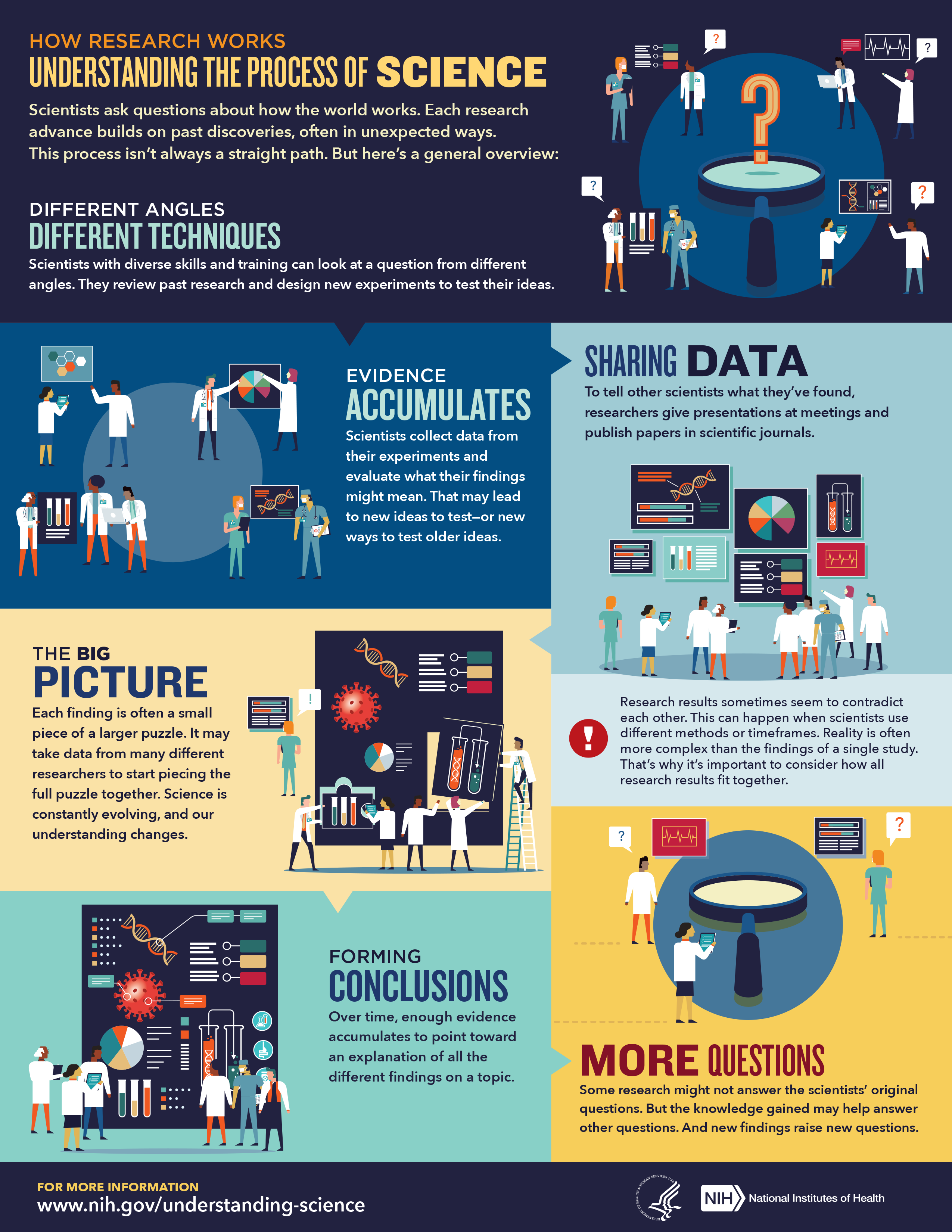Have you ever wondered how research works? How scientists make discoveries about our health and the world around us? Whether they’re studying plants, animals, humans, or something else in our world, they follow the scientific method. But this method isn’t always—or even usually—a straight line, and often the answers are unexpected and lead to more questions. Let’s dive in to see how it all works.
The Question
Scientists start with a question about something they observe in the world. They develop a hypothesis, which is a testable prediction of what the answer to their question will be. Often their predictions turn out to be correct, but sometimes searching for the answer leads to unexpected outcomes.
The Techniques
To test their hypotheses, scientists conduct experiments. They use many different tools and techniques, and sometimes they need to invent a new tool to fully answer their question. They may also work with one or more scientists with different areas of expertise to approach the question from other angles and get a more complete answer to their question.
The Evidence
Throughout their experiments, scientists collect and analyze their data. They reach conclusions based on those analyses and determine whether their results match the predictions from their hypothesis. Often these conclusions trigger new questions and new hypotheses to test.
Researchers share their findings with one another by publishing papers in scientific journals and giving presentations at meetings. Data sharing is very important for the scientific field, and although some results may seem insignificant, each finding is often a small piece of a larger puzzle. That small piece may spark a new question and ultimately lead to new findings.
Sometimes research results seem to contradict each other, but this doesn’t necessarily mean that the results are wrong. Instead, it often means that the researchers used different tools, methods, or timeframes to obtain their results. The results of a single study are usually unable to fully explain the complex systems in the world around us. We must consider how results from many research studies fit together. This perspective gives us a more complete picture of what’s really happening.
Even if the scientific process doesn’t answer the original question, the knowledge gained may help provide other answers that lead to new hypotheses and discoveries.
Learn more about the importance of communicating how this process works in the NIH News in Health article, “Explaining How Research Works.”

This post is a great supplement to Pathways: The Basic Science Careers Issue.
Pathways introduces the important role that scientists play in understanding the world around us, and all scientists use the scientific method as they make discoveries—which is explained in this post.
Learn more in our Educator’s Corner.



Nice basic explanation. I believe informing the lay public on how science works, how parts of the body interact, etc. is a worthwhile endeavor. You all Rock! Now, we need to spread the word ‼️❗️‼️
Maybe eith a unique app. And one day, with VR and incentives to read & answer a couple questions.
As you know, the importance of an informed population is what will keep democracy alive. Plus it will improve peoples overall wellness & life outcomes.
Thanks for this clear explanation for the person who does not know science. Without getting too technical or advanced, it might be helpful to follow your explanation of replication with a reference to meta-analysis. You might say something as simple as, “Meta-analysis is a method for doing research on all the best research; meta-analytic research confirms the overall trend in results, even when the best studies show different results.”